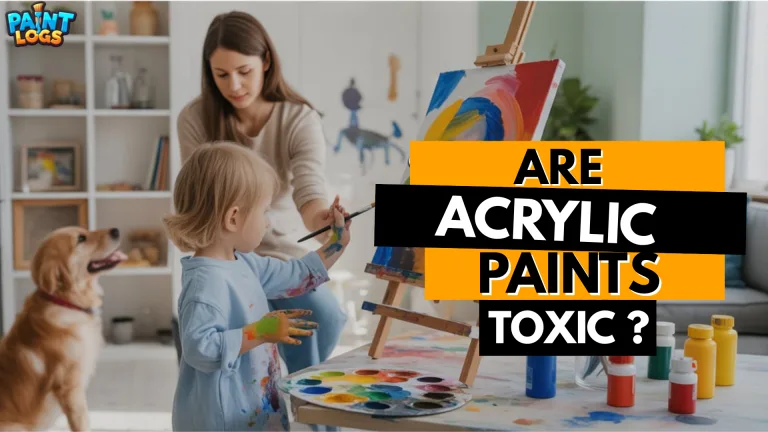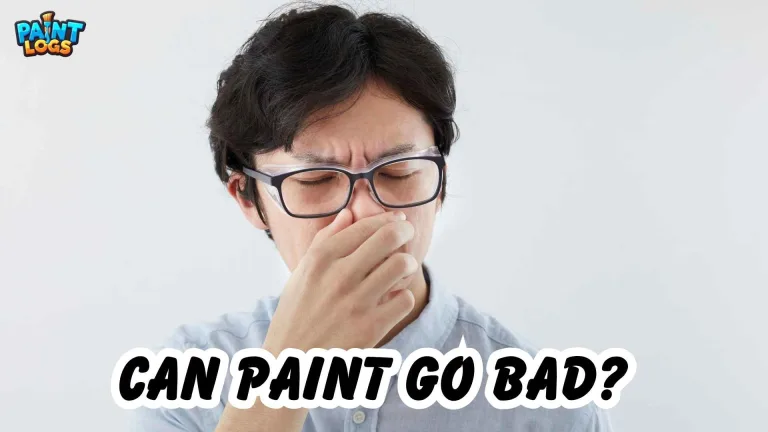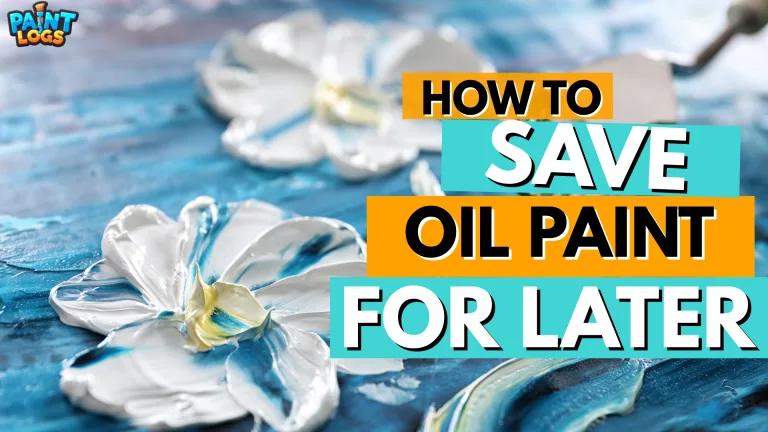Can You Put Polyurethane Over Alkyd Paint? Yes, you can apply polyurethane over alkyd paint as a protective clear coat, but timing and preparation are crucial. Alkyd paint (a type of oil-based enamel) needs to be fully cured, and the painted surface should be cleaned and lightly sanded before you brush on polyurethane.
When done correctly, adding a polyurethane topcoat can increase durability, provide extra protection, and give a nice finish to your alkyd-painted project.
Below, we’ll break down exactly how to do it right, what to watch out for, and answer common questions about combining polyurethane with alkyd paint.
If you’re curious about other finishing scenarios, check out our guide on Can You Paint Over Polyurethane?
Why Use Polyurethane Over Alkyd Paint?
Applying a polyurethane topcoat on alkyd-painted surfaces can enhance your project in several ways:
Extra Protection
Polyurethane adds a hard, protective layer over the paint, acting as a shield against scratches, scuffs, moisture, and even mild chemical exposure. This is especially useful for high-traffic surfaces (like cabinets, doors, or furniture) that see a lot of wear and tear.
Enhanced Appearance
A poly finish can give a painted surface a beautiful sheen (glossy, satin, or matte, depending on the product). It provides a polished look that often makes the paint color appear richer and smoother. For example, a glossy polyurethane can make colors pop and reflections shine, while a matte poly can soften the look if you prefer less shine.
Longevity
By sealing the alkyd paint underneath, polyurethane helps the finish last longer. It extends the life of the paint job by protecting it from chipping, peeling, or fading over time. Essentially, you’re adding an insurance layer so that the beautiful alkyd paint finish stays intact for years.
(Keep in mind that alkyd paint by itself is quite durable. Polyurethane is an optional step for when you want maximum durability and protection or a specific sheen. If you’re comparing clear finishes, you may also want to read about mineral spirits vs paint thinner for proper cleanup and prep.)

How to Apply Polyurethane Over Alkyd Paint (Step-by-Step)
To successfully put polyurethane over alkyd paint, follow these key steps in order. Proper prep will make the difference between a flawless finish and a ruined paint job:
Wait for the Alkyd Paint to Fully Cure
Patience is critical – do not apply polyurethane until the alkyd paint is completely cured. Alkyd (oil-based) paints dry to the touch in a few hours, but they can take many days to cure (harden) all the way through. As a rule of thumb, wait at least a week after painting. In fact, many professionals suggest waiting about 7–14 days for alkyd paint to cure before adding polyurethane.
In cooler or more humid conditions, you might even wait up to 2–4 weeks to be safe. This ensures that all solvents have evaporated from the paint. Applying polyurethane too early can trap uncured paint solvents, leading to problems like cloudiness, bubbling, or peeling of the finish.
For more timing guidance, see how long to wait between coats of paint.
Clean the Painted Surface
Once the paint is cured, clean it gently to remove any dust, oils, or debris that may have settled. Use a soft cloth with a mild cleaner (like a dilute dish soap solution) and wipe the surface, then rinse or wipe with plain water.
Ensure the surface is completely dry before proceeding. A clean, dry surface helps the polyurethane adhere uniformly. Even a thin layer of dust or grease can cause the clear coat to fish-eye or not stick in spots.
Lightly Sand the Alkyd Paint
Alkyd paint typically dries to a very smooth, glossy finish, which can hinder polyurethane from bonding. Take a fine-grit sandpaper (220–320 grit is ideal) and lightly scuff the painted surface. You are not trying to sand the paint off; just rub enough to remove the gloss and create a bit of texture (the surface should look a bit dull when you’re done).
After sanding, wipe off all the white dust with a tack cloth or damp rag. This step of sanding ensures the polyurethane will “grab” onto the paint rather than sit on a slick, shiny film.
Choose the Right Polyurethane (Oil-Based vs. Water-Based)
Both types of polyurethane can work over alkyd paint, but each has considerations:
- Oil-Based Polyurethane: This is the traditional choice over oil-based paints like alkyd. Oil-based poly will bond well and tends to be extremely durable. It does, however, have a yellowish tint that can become more noticeable over time. On dark colors, this isn’t an issue, but over white or light-colored paint, an oil-based poly can cause slight ambering (yellowing) that dulls the original color.
- Water-Based Polyurethane: This clear coat remains water-clear and won’t yellow over time, so it’s great for preserving the exact color of light or white paints. You can use water-based poly over alkyd paint successfully, but you must have the surface absolutely clean and dull (sanded) for good adhesion. Some professionals also recommend applying a deglosser or a coat of clear shellac as a sealer between an oil-based paint and water-based poly for optimal bonding. The upside of water-based poly is low odor and faster drying.
If it’s a light color or you’re very concerned about yellowing, go with a water-based poly (just prep well for adhesion). In all cases, it’s smart to test the combo on a small, hidden area: apply a bit of poly and see if any issues arise (like beading, fish-eye, or color changes). You can also learn more about oil paint cure times in our guide on time oil paint takes to dry.

Apply Thin Coats of Polyurethane
Stir (don’t shake) your polyurethane to avoid bubbles, and then apply it in thin, even coats with a high-quality brush (use a natural bristle brush for oil-based poly, or a synthetic bristle for water-based poly). Do not flood on a heavy coat – multiple thin layers are better.
Brush Technique:
Use long, smooth strokes in the direction of the wood grain (if applicable). Avoid going back and forth too much, as over-brushing can create lines or bubbles. For step-by-step brush care, see how to clean oil paint brushes.
Dry Times:
Follow the product’s instructions, but generally oil-based poly needs about 24 hours per coat to dry, while water-based poly can dry to recoat in 2–6 hours per coat. Always ensure the first coat is completely dry before doing the next.
Applying thin coats and allowing proper drying will help you get a clear, even finish without drips. Thick coats or rushing the recoat time can cause a “cloudy” look or tacky finish that doesn’t harden well.
Sand Lightly Between Coats:
For the best final result, sand between each coat of polyurethane. Once a coat is dry, use a very fine sandpaper (320–400 grit) or a fine sanding sponge to rub the surface lightly. This knocks down any dust nibs or brush strokes and gives the next coat something to grip. Wipe away all dust after sanding.
While it adds a little extra work, this step ensures each layer adheres well to the last and that your final finish is ultra-smooth. (Note: If you’re using only one coat of a heavy-duty polyurethane, you can skip this, but most projects benefit from 2–3 coats.)
Apply Additional Coats as Needed
Apply at least a second coat of polyurethane, and a third if the piece will see heavy use. Two coats are the minimum for decent protection, but three coats can provide a more durable, professional finish. Remember to sand between coats as mentioned.
After the final coat, let the piece cure undisturbed for a couple of days (water-based polys cure faster, oil-based polys need more time) before using the item, to ensure the coating has fully hardened.
By following these steps – waiting for full cure, prepping the surface with cleaning and sanding, and applying thin coats of the appropriate polyurethane – you’ll get a smooth, long-lasting clear finish over your alkyd-painted surface.

Tips and Mistakes to Avoid
Even with the steps above, there are some common pitfalls to be aware of when putting polyurethane over alkyd paint. Avoid these mistakes for the best outcome:
Don’t apply polyurethane too early:
As emphasized, putting poly on paint that hasn’t fully cured is a recipe for disaster. If the alkyd paint is even slightly soft underneath, the polyurethane can wrinkle, turn hazy, or peel away. Always err on the side of waiting longer.
Patience will pay off with a durable finish (whereas rushing can mean having to strip and redo everything).
Never skip the scuff sanding: ‘
Alkyd paints dry very smooth. If you skip sanding the painted surface, the polyurethane may not adhere well.
A quick pass with fine sandpaper might seem tedious, but it’s truly necessary – without it, you risk the clear coat peeling or flaking off later.
Avoid thick coats of poly:
It might be tempting to do one or two heavy coats to save time, but thick coats are more prone to trapping bubbles, drying unevenly, or sagging/dripping. They also take much longer to dry. Several thin coats will yield a clearer and more even finish.
If you see drips, brush them out immediately; if you miss them and they dry, you’ll need to sand that area and recoat.
Be mindful of yellowing:
If maintaining a true paint color (especially white or pastel shades) is important, use a water-based polyurethane to avoid any amber tint. Oil-based polys have a warm glow that can noticeably yellow light-colored paint over time.
If you must use oil-based poly (for example, for maximum hardness on a floor or tabletop), understand that a slight color shift is possible. One workaround is to apply a water-based polycrylic or clear varnish instead for white paints, though those are slightly less durable than polyurethane.
Use the right applicator and environment:
Use a good quality brush or a foam applicator recommended for polyurethane. Work in a dust-free area if possible, because dust can settle into the drying finish and create bumps.
Also, ensure adequate ventilation (especially for oil-based products) but avoid strong winds or direct fans that can deposit dust or create a rough finish.
By taking your time and following these tips, you’ll avoid the common issues and end up with a flawless clear coat over your alkyd paint. For outdoor projects, you may also want to learn when to paint or stain pressure-treated wood.

Conclusion: Can You Put Polyurethane Over Alkyd Paint?
Applying polyurethane over alkyd paint is absolutely possible—and when done correctly, it can take your project’s durability and appearance to the next level. The key is patience and preparation: allow the alkyd paint to fully cure, clean and scuff the surface, and apply multiple thin coats of the right polyurethane.
- For maximum toughness, oil-based polyurethane is a strong choice (though it will amber over time).
- For color clarity on whites and light shades, water-based polyurethane is the better option.
By following the steps carefully and avoiding common mistakes, you’ll end up with a smooth, long-lasting finish that not only protects your painted surface but also enhances its beauty.
Whether you’re sealing cabinets, doors, furniture, or trim, polyurethane gives your alkyd-painted projects that professional, polished touch.
FAQs
Can I use water-based polyurethane over alkyd (oil-based) paint?
Yes—if the paint is fully cured and the surface is clean and dull. Some finishers add a thin coat of dewaxed shellac as a bonding bridge, though careful prep often suffices. Always test first.
How long should I wait after alkyd painting before applying polyurethane?
General DIY guidance is 7–14 days to be safe; cool/humid conditions can push that longer. Some manufacturers allow water-over-oil after specific dry times (e.g., 72 hours) provided the surface is dry and properly abraded—test adhesion.
Will polyurethane yellow over alkyd paint?
Oil-based poly ambers over time (noticeable on whites). Water-based poly stays clear and preserves light colors.
Do I need to sand between polyurethane coats?
It’s best to lightly sand between coats for smoothness and adhesion unless the label specifies a no-sand recoat window.
How many coats of polyurethane should I apply over paint?
Typically 2–3 coats. Many water-based products (e.g., Polycrylic) recommend 3 coats. High-wear surfaces benefit from the third.
Is polyurethane necessary over alkyd paint?
Not always. Alkyd is already durable. Apply poly for high-touch/high-moisture items (doors, cabinets, tabletops) or when you want a specific sheen and extra insurance.
Should I choose oil-based or water-based polyurethane?
Choose oil-based for maximum toughness and when ambering is acceptable.
Choose water-based to keep whites/light colors clear, with faster dry and lower odor.
Can I spray polyurethane over alkyd paint?
Yes, if fully cured and properly prepped. Spraying can yield very even results; follow the product’s thinning and safety guidance.
What grit should I use to scuff alkyd before clear coat?
Use 220–320-grit for pre-poly scuffing; between coats of poly, use 320–400-grit.
Do I need a barrier coat (shellac) between alkyd and water-based poly?
Not strictly required if the alkyd is fully cured and scuff-sanded, but a thin coat of dewaxed shellac can improve bonding in tricky situations. (Avoid waxed shellac; use dewaxed or products like Zinsser SealCoat.)
Can polyurethane peel or wrinkle over alkyd paint?
Yes, usually from coating too soon or missing the product’s recoat window. If a window is missed, wait longer or sand before recoating to prevent wrinkling.
Is Polycrylic OK over alkyd paint?
Yes, Polycrylic is water-based and clear. Apply only after the alkyd has fully cured, with a clean, scuff-sanded surface; build multiple thin coats as directed.
How long until I can use the item after the final clear coat?
Follow your product label. For example, water-based polys like Polycrylic often allow light handling after 3 hours and normal use after 24 hours; oil-based polys cure slower.






